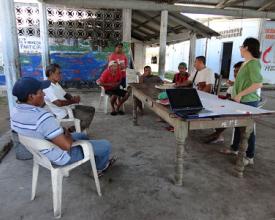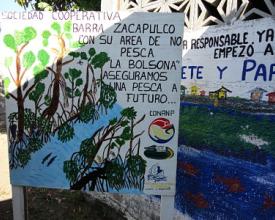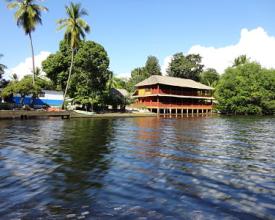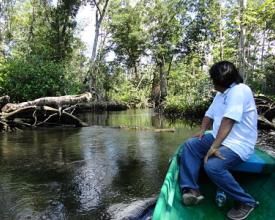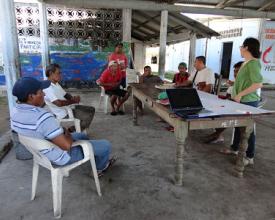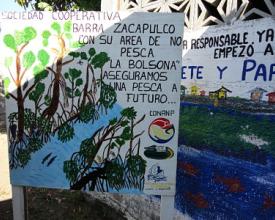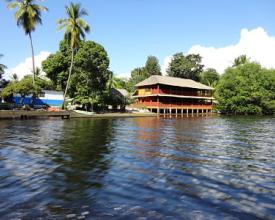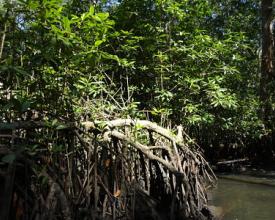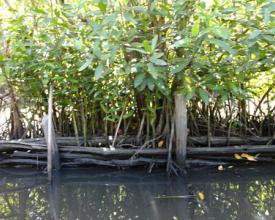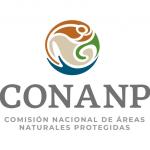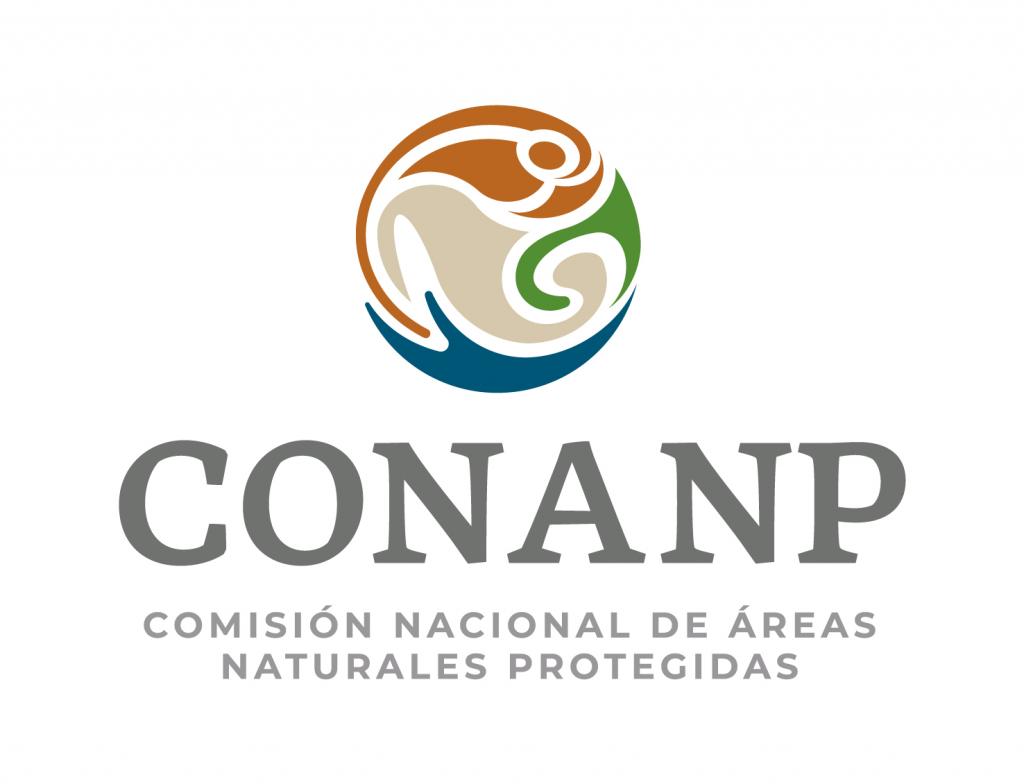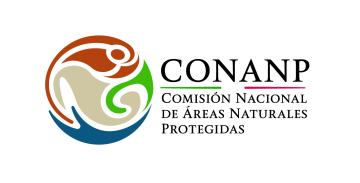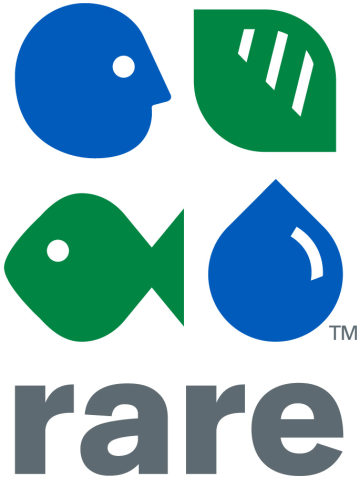Pesca Responsable" : répondre au changement climatique par une pêche durable et responsable et la réhabilitation des mangroves
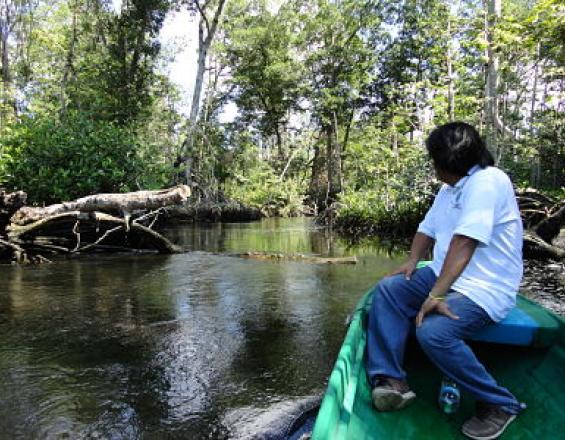
En consolidant une stratégie de gestion participative basée sur le renforcement des communautés de pêcheurs au sein de la réserve de biosphère "La Encrucijada", CONANP a réussi à promouvoir un niveau élevé d'auto-organisation communautaire. Les coopératives de pêche sont désormais en mesure de négocier, de réglementer et d'appliquer, entre elles, les meilleures pratiques convenues en matière de pêche durable et responsable et de réhabilitation des mangroves, afin de réduire les risques climatiques tels que les tempêtes et de prévenir l'érosion côtière.
Contexte
Défis à relever
1) Environnement :
a) Les événements météorologiques réduisent, d'une part, l'habitat pour la reproduction des poissons en raison de la sédimentation lors des inondations et, d'autre part, les longues périodes de sécheresse affectent l'équilibre de la salinité des masses d'eau et des systèmes de mangrove.
b) L'érosion de la partie supérieure et moyenne du bassin a augmenté le dépôt de sédiments dans les lagunes, les estuaires et les écosystèmes de mangroves, entraînant une perte de profondeur. D'autre part, la pollution des masses d'eau est liée à l'utilisation de produits agrochimiques pour les activités agricoles et aux rejets industriels.
2) Socio-économique : améliorer le niveau de :
a) l'auto-organisation des communautés ;
b) d'accès direct aux marchés, sans recours coûteux à des médiateurs ;
c) de participation communautaire aux pratiques durables
d) les revenus.
Emplacement
Traiter
Résumé du processus
Le premier bloc "Créer un sentiment d'appartenance aux écosystèmes locaux" a servi de base aux autres blocs de cette solution, qu'il s'agisse de créer une main-d'œuvre volontaire pour le travail ardu de réhabilitation des canaux et des flux dans les systèmes de mangrove (bloc IV), de soutenir la création de niveaux améliorés d'auto-organisation nécessaires à la définition et à l'autorégulation des politiques pour une pêche durable pratique (bloc II), ou de fournir la confiance nécessaire pour se lancer dans des activités économiques supplémentaires liées à l'utilisation durable des systèmes de mangrove, qui peuvent améliorer la capacité d'adaptation aux risques en cascade qui affectent la réserve (bloc III). Les autres éléments constitutifs nourrissent également le sentiment d'identité : le travail de réhabilitation physique des mangroves et les avantages qui en découlent, ainsi que la confiance acquise grâce à la gestion et à l'utilisation durables des ressources de l'écosystème pour maintenir les moyens de subsistance.
Blocs de construction
Créer un sentiment d'appartenance aux écosystèmes locaux
Le CONANP a reconnu que "sans l'intérêt des populations, vous n'arriverez à rien" en termes de promotion de l'utilisation durable des écosystèmes locaux par les communautés. Il est donc non seulement important de sensibiliser les communautés locales au lien pertinent entre le maintien des écosystèmes de mangrove, la pêche et les moyens de subsistance locaux, mais il est également vital de créer un sentiment d'identité et d'appartenance de ces communautés à ces écosystèmes. L'identité peut être développée en sensibilisant les populations aux avantages d'une gestion durable des ressources, directement en termes d'avantages pour les moyens de subsistance locaux. Toutefois, l'identité peut également être renforcée en encourageant l'engagement auto-organisé de tous les membres de la communauté non seulement à utiliser les différentes parties de l'écosystème pour assurer leur subsistance, mais aussi à participer à son entretien et à sa remise en état. Les autres éléments de cette solution contribuent tous au développement de l'identité des communautés locales en tant que partie intégrante de leurs écosystèmes locaux.
Facteurs favorables
- Le bon fonctionnement des autres éléments constitutifs de cette solution ;
- un réseau d'ONG capables de travailler efficacement avec les communautés pour promouvoir un sentiment d'appartenance et d'identité ;
- l'écosystème est encore suffisamment sain pour être une source potentielle de fierté pour la communauté et pour donner des résultats rapides (les mangroves sont parmi les meilleures de la côte américaine du Pacifique) ;
- un esprit d'entreprise au sein des communautés locales.
Leçon apprise
Le principal enseignement tiré de cette expérience est que, si le travail avec les pêcheurs s'est bien déroulé dans un premier temps, l'inclusion des femmes et des enfants dans le processus a permis de réaliser des progrès qualitatifs et de créer des synergies au sein des communautés afin d'accroître le niveau d'engagement et d'effort en vue d'une transformation des attitudes et des pratiques concernant les écosystèmes de mangrove dans lesquels ils vivent et leur utilisation durable.
Renforcer l'auto-organisation des communautés
Les niveaux d'auto-organisation communautaire ont été améliorés au sein des communautés de pêche en renforçant leurs diverses capacités nécessaires pour définir et autoréguler des politiques sur la pêche durable. Pour ce faire, des formations ont été dispensées :
-une formation sur les limites des prises de pêche et les possibilités de productivité, ainsi que sur les liens entre les ressources et la pêche ;
- Sur le terrain, un encadrement par des ONG sur la façon dont les pêcheurs peuvent prendre des décisions de groupe et planifier efficacement la zonification des écosystèmes en zones de conservation et en zones de pêche/productives ;
- L'implication des femmes et des enfants des pêcheurs dans les activités de sensibilisation, ce qui a permis de renforcer le processus d'apprentissage au sein des familles.
Cela a conduit à une cohésion sociale au sein de la zone, permettant aux coopératives de pêche de négocier et de réglementer entre elles afin de convenir et d'appliquer les meilleures pratiques pour une pêche durable ; et augmentant leur capacité à trouver des marchés directs pour leurs produits, sans avoir besoin d'intermédiaires. Le fait de pouvoir s'auto-organiser au point d'élaborer et de mettre en œuvre leurs propres solutions de pêche durable a rendu les communautés propriétaires de ces solutions, ce qui signifie que ces dernières seront plus susceptibles d'être maintenues à l'avenir.
Facteurs favorables
- Un réseau d'ONG suffisamment expérimentées pour pouvoir encadrer les pêcheurs sur le terrain ;
- d'excellents matériels et méthodes d'enseignement adaptés aux communautés ;
- l'engagement des épouses et des enfants dans l'ensemble du processus ;
- des niveaux d'organisation existants sur lesquels s'appuyer (par exemple, les coopératives de pêche) ;
- un sentiment d'identité et d'appartenance partagé entre les coopératives de pêche ;
- un sentiment de fierté et d'esprit d'entreprise au sein des communautés locales.
Leçon apprise
- Il est essentiel d'utiliser les coopératives existantes pour générer, diriger et gérer de nouvelles techniques et réglementations dans les activités de production existantes.
- Les gens sont plus enclins à s'impliquer et à mettre en œuvre des initiatives auto-organisées pour une gestion durable lorsqu'ils perçoivent des améliorations rapides dans leurs activités productives liées à l'entretien et à la réhabilitation des mangroves.
- C'est pourquoi il est important de contrôler tous les avantages découlant des initiatives.
- L'inclusion de tous les membres de la famille dans le processus de développement des compétences et des capacités d'auto-organisation.
- Une bonne gestion du réseau d'ONG nécessaire au développement des capacités est essentielle.
- Des ressources suffisantes doivent être disponibles pour continuer à travailler sur le développement des capacités organisationnelles des pêcheurs jusqu'à ce qu'ils s'organisent eux-mêmes.
Créer une capacité d'adaptation pour amortir les risques
Le CONANP encourage les pêcheurs à diversifier les activités économiques de leurs familles dans les domaines suivants
- la production et la vente de produits de niche issus de la mangrove, tels que le miel de fleurs de mangrove ;
- la mise en place d'activités d'écotourisme, telles que des visites guidées à l'intérieur des mangroves, des excursions d'observation des oiseaux.
Le CONANP soutient cette diversification de la manière suivante :
- en développant les capacités de ces coopératives dans le domaine du développement et de l'administration des activités touristiques
- en aidant ces coopératives à trouver des marchés pour leurs nouveaux produits.
L'avantage de l'approche de CONANP est de fournir aux communautés de pêcheurs une capacité d'adaptation tampon en termes de sources de revenus multiples, afin de réduire les risques économiques lorsque les pêcheries sont affectées par des tempêtes tropicales ou lorsque CONANP travaille à résoudre le problème de la contamination des rivières par les communautés situées en amont.
Facteurs favorables
- Un point d'attraction existant pour les touristes, afin de s'assurer qu'il y a un flux de touristes et que les coûts d'attraction du tourisme restent viables ;
- des épouses engagées et des maris qui les soutiennent ;
- des structures existantes de cohésion sociale, de leadership et d'organisation (telles que les coopératives de pêche) pour être en mesure de soutenir de nouvelles activités entrepreneuriales.
Leçon apprise
Pour que les populations locales adoptent de nouvelles activités commerciales, il est important de faire preuve de patience et de cohérence dans les conseils prodigués. La crainte d'une perte de revenus à court terme rendra les gens plus réticents à prendre des risques. Avant tout investissement dans de nouvelles activités, les communautés doivent avoir la preuve que ces nouvelles activités sont réalisables et rentables.
Il est essentiel de s'assurer que les populations locales ont la capacité de commercialiser et d'attirer les clients vers de nouveaux produits, qu'il s'agisse de miel ou de services touristiques.
Il existe déjà des infrastructures touristiques dans la réserve, mais elles sont sous-utilisées. C'est à la fois une indication du défi que représente le passage à l'écotourisme et une opportunité : les nouvelles activités touristiques pourraient être liées à celles qui existent déjà, pour le bénéfice mutuel des deux parties.
Il faut reconnaître que les capacités de gestion des entreprises sont probablement faibles dans les communautés marginalisées. Il est essentiel que la formation comprenne un soutien continu aux habitants sur la manière de fixer le prix des services et de gérer les entreprises.
Réhabilitation des canaux et des flux hydrologiques dans les mangroves
Pour résoudre les problèmes de salinité dans les écosystèmes de mangrove perturbés, ainsi que pour optimiser la production et la migration des poissons, il est essentiel que les canaux à l'intérieur des systèmes de mangrove soient correctement dégagés et entretenus, même si cela implique de couper quelques arbres. Des canaux dégagés et bien entretenus permettent aux flux hydrologiques entre les sources d'eau douce et salée d'une mangrove de trouver un équilibre naturel, ce qui favorise la biodiversité. Ils permettent également aux poissons d'entrer et de sortir de l'écosystème au rythme de ces flux, et facilitent l'expansion naturelle des mangroves grâce à une plus grande dispersion des graines.
Facteurs favorables
- Une main-d'œuvre locale engagée et convaincue des avantages de la réhabilitation des mangroves.
- Des agences gouvernementales formées qui connaissent les meilleurs moyens de réhabiliter les mangroves.
- Un programme durable de paiement des travaux temporaires permettant à la communauté locale d'être récompensée pour les services qu'elle rend à l'entretien de l'écosystème, ce qui lui confère une capacité économique d'adaptation supplémentaire (voir l'élément de base III).
Leçon apprise
- Les clés de la réhabilitation de la mangrove sont la restauration et l'entretien des canaux, qui permettent d'améliorer les flux du réseau hydrologique.
- Il ne faut pas compter uniquement sur les programmes gouvernementaux de rémunération du travail temporaire et de subventions pour susciter un soutien local en faveur de l'entretien des écosystèmes de mangrove, car l'argent disponible pour ces programmes pourrait ne pas être garanti à moyen ou à long terme.
- La réhabilitation et l'entretien des mangroves est un travail difficile et éreintant - il faut être convaincu et prouver les avantages qu'il apporte aux moyens de subsistance pour maintenir l'engagement d'une communauté dans une telle tâche.
Impacts
Après deux ans de travail et de renforcement des processus de CONANP, et avec la participation des coopératives de pêche de 8 communautés locales (avec une population totale de 3029 habitants), 591 pêcheurs en ont bénéficié directement. CONANP a travaillé à l'amélioration de leurs capacités dans les domaines suivants
-L'amélioration des pratiques de pêche durable et l'augmentation des prises, qui sont possibles grâce aux actions de protection et de conservation des systèmes de mangroves, qui ont été considérablement améliorés. La réhabilitation de 84 km de canaux, d'estuaires et de lagunes a amélioré la circulation hydraulique dans les mangroves, ce qui a permis d'améliorer la qualité de l'eau, d'accroître la productivité de l'écosystème, d'augmenter la dispersion des graines de mangrove et d'augmenter la diversité des espèces qui pénètrent dans les mangroves.
-L'augmentation des revenus de huit communautés de pêcheurs, résultant de l'augmentation de la production et de la vente des produits de la pêche et des produits artisanaux, ainsi que des paiements pour les services écosystémiques que les coopératives effectuent en vue de la réhabilitation de la mangrove.
-Amélioration des systèmes de gouvernance au sein des communautés de pêcheurs, ce qui a renforcé la cohésion sociale dans la zone et donné la confiance nécessaire pour initier des changements nécessitant des niveaux élevés d'organisation, tels que le développement de formes directes de commercialisation de leurs produits locaux, sans impliquer d'intermédiaires coûteux.
Bénéficiaires
-591 pêcheurs de 8 communautés de pêcheurs : restauration et réhabilitation de 84 km de canaux dans le système de mangroves, et maintien de l'habitat des espèces.
-Leurs épouses : nouvelles activités économiques - aquaculture, artisanat, éducation à l'environnement
Objectifs de développement durable
Histoire
La réserve de biosphère de La Encrucijada (superficie : 167 310 ha) contient deux grands systèmes de lagunes côtières, dont certaines des forêts de mangroves les mieux préservées du Pacifique américain. Nichée entre l'océan et les montagnes, la réserve abrite des communautés de pêcheurs, d'éleveurs et d'agriculteurs. En raison de la topographie des montagnes, ces deux dernières activités sur les pentes nord de la réserve peuvent rapidement affecter les systèmes de mangroves côtières au sud par l'intermédiaire des systèmes fluviaux connectés. Le changement climatique et l'augmentation de la fréquence des tempêtes tropicales entraînent une cascade de risques : les tempêtes endommagent les systèmes de mangrove et affectent négativement la dynamique de la production et de la migration des poissons, altérant l'équilibre hydrologique délicat entre l'eau salée et l'eau douce. L'augmentation des inondations dues aux tempêtes accroît les flux de sédiments en aval dans les canaux et les plans d'eau des écosystèmes de mangrove. Les inondations entraînent également la contamination des activités d'élevage et d'agriculture dans ces écosystèmes. Tous ces facteurs sont susceptibles de mettre en péril la durabilité des mangroves et des stocks de poissons locaux, et donc d'affaiblir les moyens de subsistance des populations côtières. En réponse, le CONANP a consolidé une stratégie de gestion participative axée sur la communauté et basée sur le renforcement du sentiment d'identité et d'appartenance des communautés en tant qu'élément central de la réserve de biosphère. En commençant par les communautés de pêcheurs, ce sentiment d'appartenance a été encouragé en impliquant les pêcheurs dans la réhabilitation et l'entretien des écosystèmes de mangrove et des flux hydrologiques. Ces deux éléments contribuent à l'amélioration des pêcheries locales. En outre, les femmes et les enfants ont également été impliqués dans des activités liées aux avantages de l'utilisation durable des ressources locales pour leurs moyens de subsistance. L'auto-organisation des communautés a également été activement renforcée. Cela s'est traduit par : i) des coopératives de pêche négociant et réglementant entre elles pour convenir et appliquer les meilleures pratiques de pêche durable, et ii) l'augmentation de leur capacité à trouver des marchés directs pour leurs produits, sans avoir besoin d'intermédiaires. La conviction et l'appropriation par les communautés de la solution pour préserver leur environnement et leurs moyens de subsistance ont été déterminantes. Afin de fournir une capacité d'adaptation aux communautés de pêcheurs, en termes de sources de revenus secondaires, le CONANP a également aidé les pêcheurs à diversifier leurs activités économiques vers i) des services d'écotourisme liés à la mangrove, tels que des excursions d'observation des oiseaux, et ii) la production de produits de niche, tels que le miel de fleurs de mangrove.


